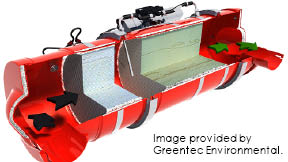Not sure what the difference is between Active and Passive Regeneration... you're not alone!
It's important that you fully understand the maintenance of your diesel particulate filter, with includes the truck's regeneration system. If you recall from a previous post, soot buildup in the dpf must be cleaned at some point, or filter clogging will occur. Unburned soot inside the filter will eventually cause backpressure, and this signals the engine it's time to be cleaned.
In order for regeneration to occur, increased temperatures through the dpf are required for certain periods of time. The perfect filter operating temperature is roughly 1300°F, and that's when the filter will regenerate on its own.
PASSIVE REGENERATION is the most basic form of cleaning. In this type of system, exhaust temperatures from the engine get hot enough to initiate regeneration during typical vehicle operation.
ACTIVE REGENERATION is more complex and requires a source of heat to initiate the regeneration cycle. In this case, air passes through a diesel oxygen catalyst (DOC) prior to entering the dpf. This process fills the filter with Hydrocarbon soot and Nitrogen Dioxide which is present in the exhaust.

The unburned soot will eventually cause backpressure. This signals the engine it is time to be cleaned, and the regeneration process begins.
To start the active regeneration process, the engine doses raw diesel fuel on the face of the catalyst, oxidizing the fuel and creating heat at nearly 1300ºF.
As we will talk about next week, not all particles in diesel fuel can be burned, and these unburned particles create ash that is left in the filter. The only way to eliminate the ash is by physically cleaning the filter.




